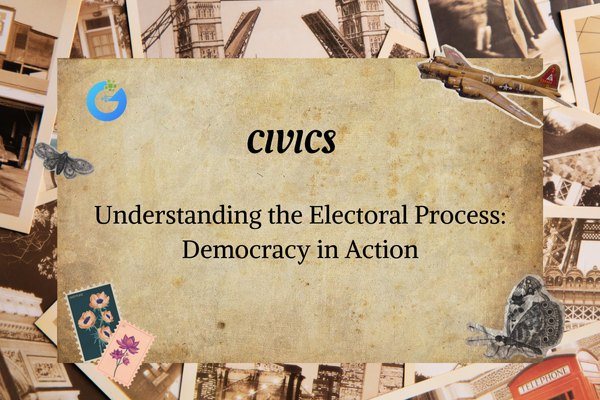Introduction
Have you ever tried to push a swing or pressed a balloon just for fun? In both moments, you’re actually exploring the world of force and pressure without even realizing it! Every time we interact with objects—pushing, pulling, squeezing, or lifting—we’re using force. And when that force is spread over an area, it results in pressure.
These two concepts are not just confined to your science books. They are at play all around you—when you walk, open a bottle cap, ride a bicycle, or even breathe! In this lesson, we’ll break down what force and pressure really are, how they affect us, and where you’ll find them in your everyday adventures.
expert-led Physics classes – visit our website to learn more
What is Force?
Force is the push or pull you apply to something to change its state. It’s what makes objects move, stop, change direction, or change shape. Without force, nothing in the physical world would ever happen!
Imagine you’re trying to open a stuck drawer. You push harder and it finally opens. That effort you made is force in action. Whether it’s gravity pulling you to the ground or your leg muscles pushing you forward, force is always involved.
Definition:
Force is an interaction that, when unopposed, will change the motion of an object.
Effects of Force
Here’s how force can change the behavior of an object:
- Change in Speed: A stationary football starts rolling when you kick it.
- Change in Direction: Steering a car causes it to change direction while moving.
- Change in Shape: Squeezing a rubber ball makes it squish and deform.
SI Unit of Force
The SI unit of force is the Newton (N), named after Sir Isaac Newton, who formulated the laws of motion.
Formula for Force
Force = Mass × Acceleration
F = m × a
This means that the heavier something is (mass), and the faster you try to move it (acceleration), the more force you need.
Types of Force
There are two broad categories of force:
Contact Force
This occurs when two objects are physically touching each other.
| Type | Description | Example |
| Muscular Force | Force applied using muscles | Lifting a school bag |
| Frictional Force | Opposes motion between surfaces | Rubbing hands together |
Non-Contact Force
This type of force acts at a distance, without any direct contact.
| Type | Description | Example |
| Gravitational Force | Attraction between objects with mass | Apple falling to the ground |
| Magnetic Force | Attraction/repulsion between magnets | Magnet attracting a nail |
| Electrostatic Force | Force between electric charges | Hair sticking to a balloon |
What is Pressure?
Have you ever pressed your finger into wet sand and noticed how deep the mark goes? That’s pressure at work.
Definition:
Pressure is the force applied per unit area of a surface.
Formula for Pressure
Pressure = Force / Area
P = F / A
SI Unit of Pressure
The SI unit of pressure is the Pascal (Pa).
Important Concepts
- Smaller Area = Higher Pressure
A sharp knife cuts better because the force is concentrated over a tiny area. - Larger Area = Lower Pressure
When lying flat on soft ground, your body weight is spread out, so you don’t sink in easily.
Example: High heels vs. flat shoes. The same person exerts more pressure wearing heels due to the smaller contact area.
Applications of Pressure in Daily Life
Here’s how we cleverly use pressure:
| Object | How Pressure Helps |
| Nail | Sharp end applies force on a tiny point to penetrate wood |
| Syringe | Narrow nozzle creates high pressure for smooth injection |
| Knife | Thin edge increases pressure for easy cutting |
| Truck Tyres | Wide tyres reduce pressure on roads, preventing damage |
Pressure in Fluids
Fluids (both liquids and gases) also exert pressure.
- Water in a bottle pushes equally in all directions.
- Weather changes due to air pressure differences.
- Aircraft fly because of pressure variations around their wings.
Important Note:
Pressure increases with depth in liquids. That’s why divers feel more pressure the deeper they go underwater.
Core Concepts Table
| Concept | Definition | Formula | Unit |
| Force | Push or pull on an object | F = m × a | Newton (N) |
| Pressure | Force per unit area | P = F / A | Pascal (Pa) |
FAQs
Can force exist without motion?
Yes! Force can act on an object without causing movement, like a book sitting on a table.
Why is it harder to walk on sand?
On sand, the larger surface area under your feet means lower pressure, making it less stable.
How does pressure increase in fluids?
Because the weight of the fluid above adds more pressure as you go deeper.
Why do truck tyres need to be wide?
To spread the load and reduce pressure on the road, avoiding road damage.
Why does a knife have a sharp edge?
A sharper edge concentrates the force into a smaller area, increasing pressure for easier cutting.
Fun Facts
- 1 Pascal is the pressure of a dollar bill resting on a table!
- Deep-sea creatures withstand tons of pressure that would crush submarines!
- Drinking through a straw? You’re lowering pressure inside it, so the liquid rushes in!
Conclusion
Force and pressure are two of the most fundamental yet fascinating principles that govern the physical world. From lifting your school bag to building spacecraft, these concepts are everywhere—silent but powerful. Understanding them not only makes science more fun but also helps you see how cleverly our world is built around them.
Next time you push a swing, walk on sand, or watch a tyre roll, remember — you’re witnessing force and pressure in action!








